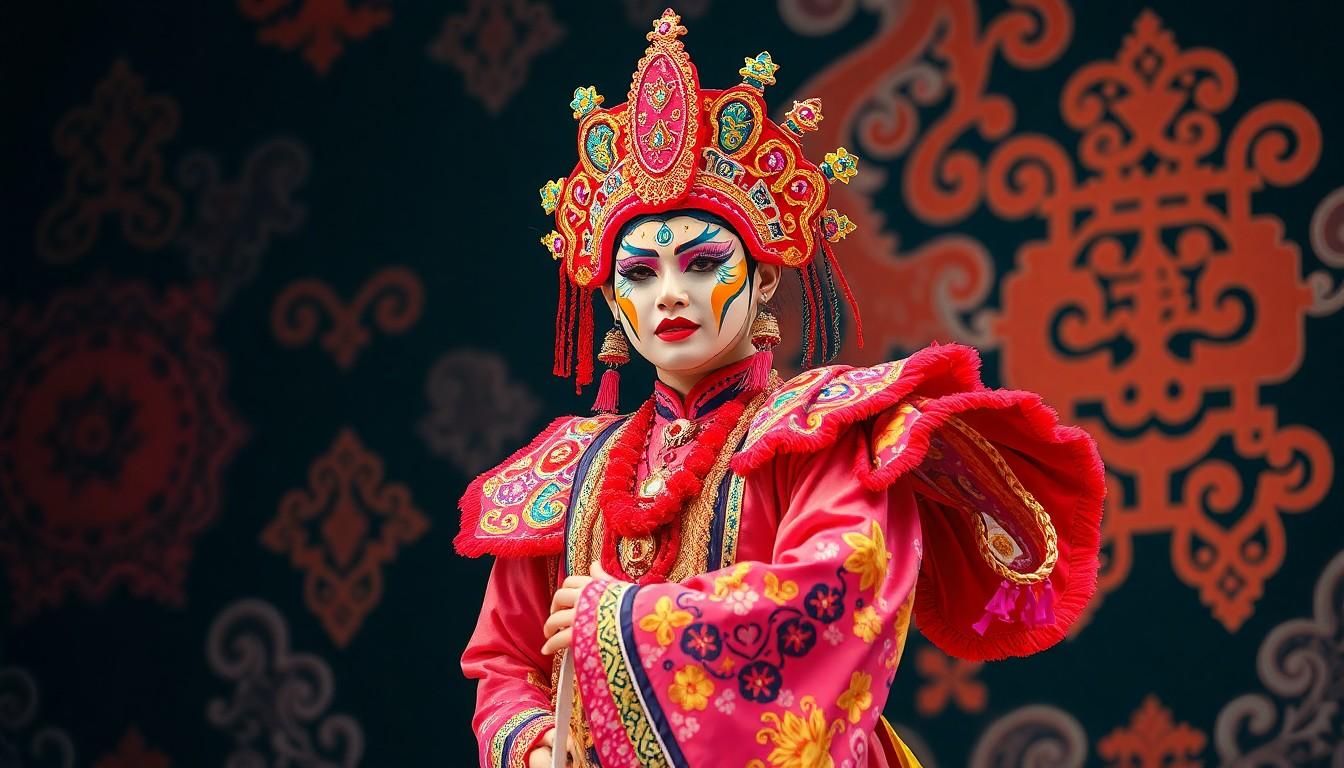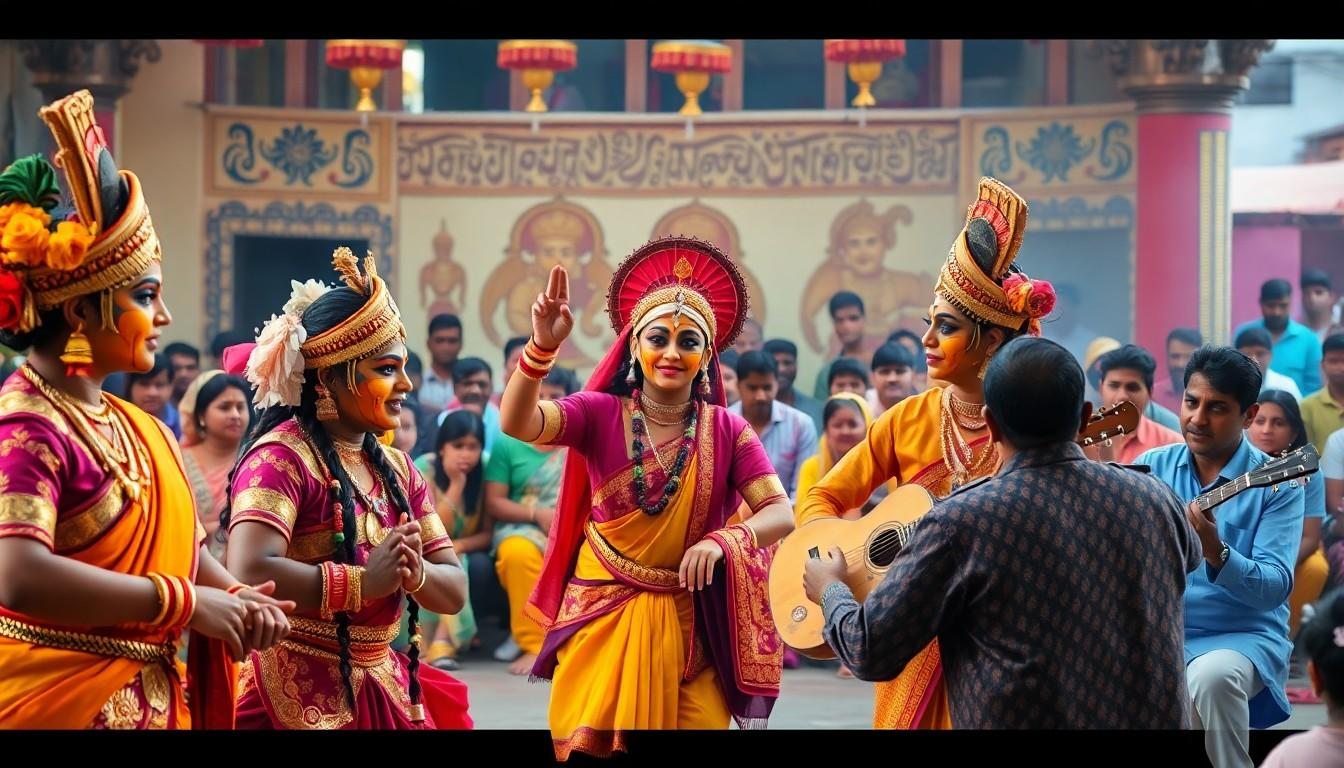In the vibrant tapestry of Indian culture, कलणमटक stands out as a dazzling gem that’s just waiting to be discovered. This traditional art form, often overshadowed by its more famous cousins, boasts a unique blend of rhythm, storytelling, and vibrant visuals that could make even the most seasoned couch potato jump out of their seat.
Overview of कलणमटक
कलणमटक represents a unique blend of rhythmic movement, storytelling, and vibrant visual elements, making it an exceptional Indian art form. This art form often garners less attention compared to mainstream cultural expressions yet captivates its audiences deeply.
Historical Background
कलणमटक traces its roots back to ancient India, where it flourished as a narrative performance art. This tradition evolved in regional communities, reflecting local customs and beliefs. Artisans historically used this medium to convey epic tales and folklore, showcasing societal values and cultural identity. Over centuries, its techniques and narratives adapted, embracing influence from various dynasties. Scholars believe that this art form, while rooted in tradition, has incorporated contemporary themes, allowing it to remain relevant and accessible.
Cultural Significance
कलणमटक serves as a vital cultural expression, preserving historical narratives and promoting local heritage. Audiences engage with its performances, fostering communal bonds and collective memory. This art form highlights the importance of oral tradition in transmitting knowledge across generations. Festivals and community gatherings often feature कलणमटक, reinforcing its role as a unifying force. Artists within this field not only entertain but also educate, bridging gaps between the past and present while sustaining cultural narratives.
Features of कलणमटक

कलणमटक showcases a unique blend of artistic and performance elements that captivate audiences. The art form thrives on its vibrant styles and intricate narratives.
Artistic Style
Colorful costumes and elaborate makeup characterize the artistic style of कलणमटक. Performers adorn themselves in vivid hues, embodying various characters. Each costume reflects the essence of the story being told. Using visually striking backdrops enhances the storytelling experience. Artists incorporate traditional motifs and symbols to signify cultural themes. The music accompanying performances often features classical instruments, creating an immersive atmosphere. Lighting plays a significant role, highlighting crucial moments and emotions in the narrative. This combination of visuals and sounds captivates viewers, drawing them into the performance.
Performance Elements
Live music enriches the performance elements in कलणमटक, setting the pacing and mood. Dancers often deliver expressive movements that convey the emotions and actions of the characters. The choreography integrates rhythmic patterns that connect with the narrative flow. Interaction with the audience adds an engaging dimension, inviting participation and connection. Dialogues are delivered with emotional intensity, enhancing the storytelling aspect. Performances usually feature elements of improvisation, allowing artists to adapt to audience reactions. These dynamic factors contribute to a lively atmosphere, ensuring every show is distinct and memorable.
Contemporary Relevance
The art of कलणमटक maintains significant importance in today’s cultural landscape, particularly through its modern adaptations and positive societal impact.
Modern Adaptations
Adaptations of कलणमटक occur in numerous forms, as artists merge traditional elements with contemporary practices. Modern theater groups often experiment with technology, integrating visuals and new media to enhance performances. Diverse settings now host these adaptations, including urban festivals and cultural events that attract younger audiences. Innovations in choreography and music also play a vital role, reflecting current themes and issues. This evolution appeals to new generations while preserving core traditions, ensuring that कलणमटक remains dynamic and relevant.
Impact on Society
कलणमटक significantly impacts communities by fostering cultural pride and cohesion. It acts as a platform for dialogue, addressing social issues through storytelling and performance. Community gatherings featuring कलणमटक encourage participation and cooperation, strengthening interpersonal relationships. Education about local customs and narratives becomes more accessible for audiences of all ages. Additionally, this art form often supports local economies by attracting tourists and fostering artistic collaborations. The preservation of collective memories through these performances enriches societal values and enhances cultural identity.
Notable Artists and Performances
This section highlights prominent artists and significant performances within the कलणमटक tradition, showcasing the art form’s vibrancy.
Renowned Practitioners
Several artists have significantly impacted कलणमटक. K. P. Sreelatha, known for her powerful portrayals, captures the essence of traditional narratives. R. Suryakumar, with his innovative choreography, brings a fresh perspective to classic tales. Others, like J. Jayalakshmi and A. Ganesh, contribute unique interpretations that resonate with audiences. Each of these practitioners embodies the art’s spirit while simultaneously adapting it to contemporary tastes. As they perform, their dedication helps preserve and promote कलणमटक within cultural landscapes.
Landmark Shows
Noteworthy performances of कलणमटक draw attention to its cultural significance. In 2021, the “Kalanganam Festival” celebrated the art’s essence through diverse presentations. Another significant event, the “Heritage Gala,” featured a fusion of traditional forms, showcasing both classic and modern elements. These performances attracted diverse audiences, reinforcing the art’s relevance. Annual festivals often highlight stories from local folklore, capturing communal narratives. Landmark shows help elevate कलणमटक’s status while fostering appreciation among younger generations.
Conclusion
कलणमटक stands as a vibrant testament to India’s rich cultural heritage. Its unique blend of storytelling, rhythm, and visual artistry captivates audiences and fosters a sense of community. As this art form evolves, it continues to bridge the gap between tradition and modernity, ensuring its relevance in today’s society.
By engaging younger generations and promoting cultural pride, कलणमटक not only preserves historical narratives but also encourages dialogue on contemporary issues. The dedication of artists and the enthusiasm of audiences play a crucial role in keeping this dynamic tradition alive. As it thrives in festivals and community gatherings, कलणमटक remains a powerful medium for sharing stories that resonate across time and space.

